The Impressive Ferdinand Berthoud Chronomètre FB RSM, Now with Deadbeat Seconds Display (Live Pics)
A tourbillon regulator & fusée-and-chain transmission with independent deadbeat seconds and a stop-seconds mechanism developed by an apprentice watchmaker.
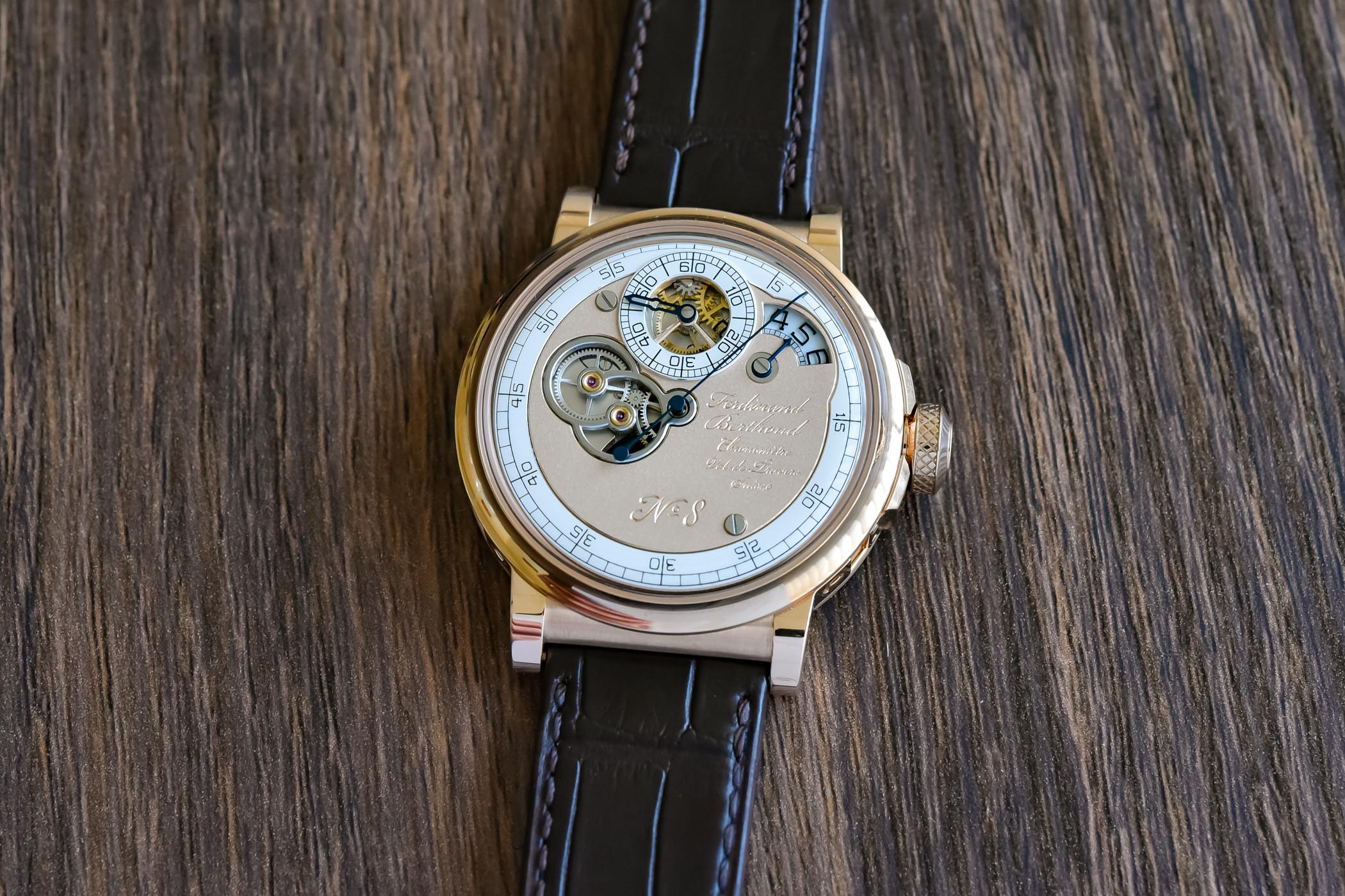
The latest Chronomètre FB RSM perpetuates a tradition established by the famous 18th-century horologist Ferdinand Berthoud who devoted his life to advancing the exciting science of horology and forming young apprentices. This year, the brand Ferdinand Berthoud has invited a young watchmaker from the University of Neuchâtel to develop a movement as part of his graduation project. Inspired by the Marine Clock No. 8 built by Ferdinand Berthoud in 1768, the dial is a regulator-style dial and the FB-T.FC.RSM calibre, a tourbillon regulator with a fusée-and-chain transmission, incorporates independent deadbeat seconds and a stop-seconds mechanism. Limited to 20 movements, the shape of the case – round or octagonal – can be chosen by the collector as well as other features like the surface treatment and colour of the gold dial, in order to make his very own version of the new Ferdinand Berthoud Chronomètre FB RSM.
Enlightened Minds
At the age of 14, Ferdinand Berthoud (1727-1807) was taken on by his brother as a clockmaker’s apprentice in Couvet, a municipality in the Val-de-Travers canton of Neuchâtel. Armed with a good background in clock making, he moved to Paris in 1745, where intellectual and scientific inquiry were all the rage during the Age of Enlightenment. Berthoud’s scientific mind was stimulated and, combined with his manual dexterity, would become one of the greatest horologists of all time. By 1760 he set about building a marine chronometer that could determine a ship’s longitude at sea. In 1768 he submitted two marine chronometers, Marine Clocks No. 6 (left image below) and No. 8 (right image below), to accompany the Count of Fleurieu on his 18-month voyage from Rochefort to Santo Domingo and back. Berthoud’s Marine Clock No. 8 was used to determine the ship’s position on a map and calculate the longitude to the nearest half degree based on astronomical observations. Also referred to as H.M.8, the marine clock had a regulator-type display with separate indications for the minutes, hours and seconds driven by a vertical movement and regulated by a thermo-compensated balance spring.
Two years later, Ferdinand Berthoud was appointed “Clockmaker and Mechanic by appointment to the French King and Navy“. The historic Marine Clock No.8 was owned by Louis XV and is now kept at the National Conservatory of Arts and Crafts (CNAM) in Paris.
The Sorcerer’s Apprentice
The reason behind choosing Marine Clock No.8 as the muse for this collaboration was not fortuitous. Historical records point at the possible collaboration of Ferdinand Berthoud’s apprentice, Jacques-Vincent Martin, in the construction of the clock. The young apprentice watchmaker from the University of Neuchâtel who worked on the FB RSM watch studied the history of deadbeat seconds clocks and their patents as well as the development of the complication for the constant-force tourbillon regulator calibre. Another directive was that the complication had to fit inside the movement’s dimensions and comply with COSC-chronometer certification standards.
Round or Octagonal Case
Renowned for its octagonal cases and lateral portholes, the brand produced its first round watch case in 2020 with the Chronomètre FB 2RE. As you can see, the case used to promote the watch is very similar to the 2020 Chronomètre FB 2RE that picks up on the shape of historical marine chronometers with a cylindrical container fitted with short, tapering lugs and secured to the case with stylised bolts. Another signature feature is the large 9mm knurled crown with a dynamometric (decoupling) system that disengages as soon as the barrel is fully armed. The case measures 44mm in diameter, has a thickness of 14.30mm and is available in white or rose gold. The brand can also case the movement inside the hallmark eight-sided case for fans of the octagonal case.
Regulator Dial
Three dial options are currently available for the Ferdinand Berthoud Chronomètre FB RSM, all made from 18k gold and engraved by hand. The white gold model has a gold dial with a blue CVD treatment; the rose gold model has a gold dial with a vertical satin-brushed finishing and a black rhodium treatment; and the second rose gold model, the most contemporary of the three, has a sandblasted rose gold dial.
Interpreting the regulator display in more contemporary language, there are openworked areas on the dial and a curious bulge at 2 o’clock that invades a section of the all-important seconds track. The protruding area is used to display the hours on a rotating sapphire disc with black numerals and read by a small, fixed arrow-tipped pointer. The minutes are also off-centred and displayed on an openworked and silver-toned ring at 12 o’clock with Arabic numerals and skeletonised dagger-shaped hands in white or rose gold to match the case material.
The other openworked area on the dial corresponds to the deadbeat seconds mechanism visible at 9 o’clock. The deadbeat seconds are symbolically shaped like a figure-eight to match the historic Marine Clock No.8. Since the seconds are the protagonists of this regulator dial, they are displayed on a flat sandblasted silver-toned flange with clearly defined 5-second increments. The central seconds hand, advancing in precise one-second jumps, is made of titanium with either a blue CVD treatment or gilded. Its slightly curved tip reaches the very edge of the seconds track. The inscriptions on the dial are all hand-engraved in a cursive font and read “Ferdinand Berthoud Chronomètre Val-de-Travers Suisse No. 8“.
FB-T.FC-RSM calibre
The reverse side of the Ferdinand Berthoud Chronomètre FB RSM is spectacular with its pillar-type architecture and full view of the suspended barrel and inverted fusée (patented). Inspired by Ferdinand Berthoud’s marine chronometers, the fusée-and-chain mechanism ensures the delivery of a constant force of energy to the tourbillon with direct-drive seconds. Despite the regulator display and the integration of an independent deadbeat seconds mechanism, the movement is just 9.89mm thick. Incidentally, the SM in the calibre name refers to the seconde morte, French for deadbeat seconds. Fitted with a balance-stop device, the tourbillon can be stopped to set the time to the exact second via the crown. Beating at a frequency of 21,600vph, the movement delivers 53 hours of power reserve. There is also a power reserve indicator in a cut-out area of the bridges to the right of the large aperture housing the tourbillon.
As the press release explains, a deadbeat seconds mechanism with chronometer certification is a rare feat. “This is because stopping and restarting the central hand in one-second jumps involves three steps: stopping the gear train concerned; storing the torque it continues to produce during this pause, and then releasing it all at once after one second. Since the regularity of the torque is the essence of a constant-force calibre, interrupting its flow 60 times a minute without compromising its linearity is a true technical feat – which is why the majority of deadbeat seconds movements fail to achieve COSC certification. The Chronomètre FB RSM has been awarded this certification and is, therefore, a true timekeeper, like the Marine Clocks by the Master Watchmaker himself.”
The deadbeat second mechanism itself is different to the one of the Chronomètre FB 2RE with remontoir d’égalité. A new development, it is partially visible via the 8-shape opening in the dial (showing gears, a jumper and a mobile pinion moving back and forth every second).
Availability
As mentioned, only 20 movements will be produced, and the collector can choose between a round or octagonal case for his Ferdinand Berthoud Chronomètre FB RSM. The strap is hand-stitched alligator leather (125 x 70mm) with the choice of a gold pin buckle or a folding clasp. Price is available upon request.
More information at www.ferdinandberthoud.ch.

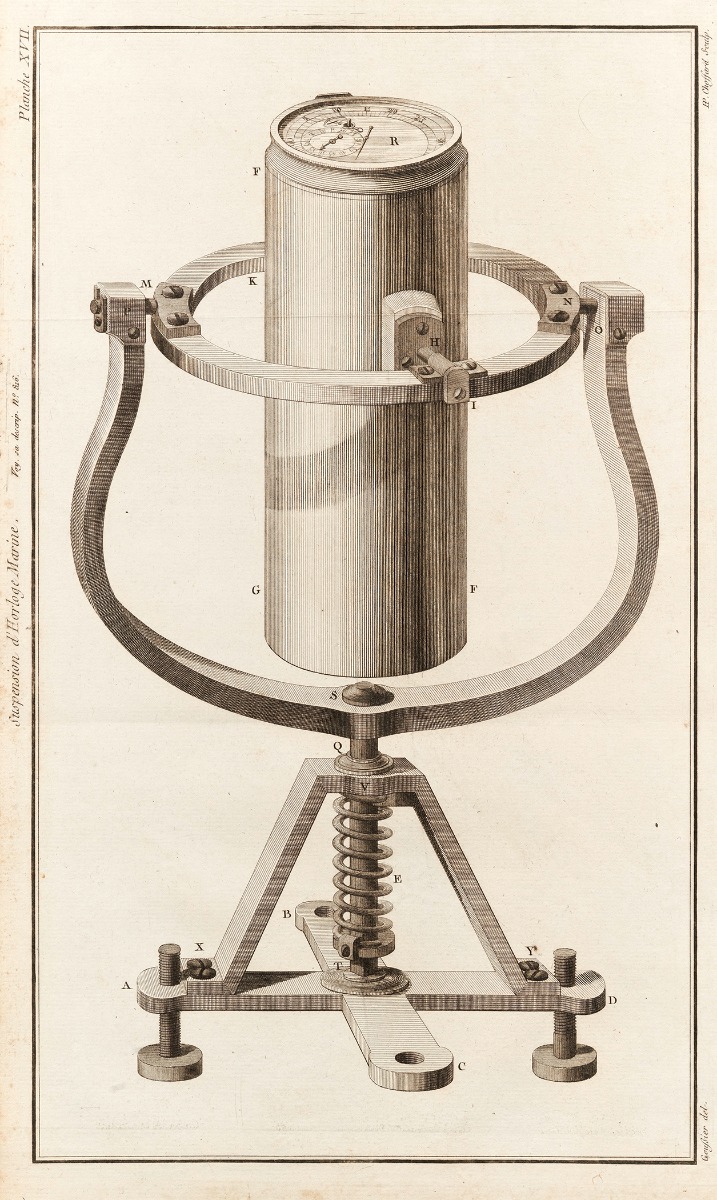
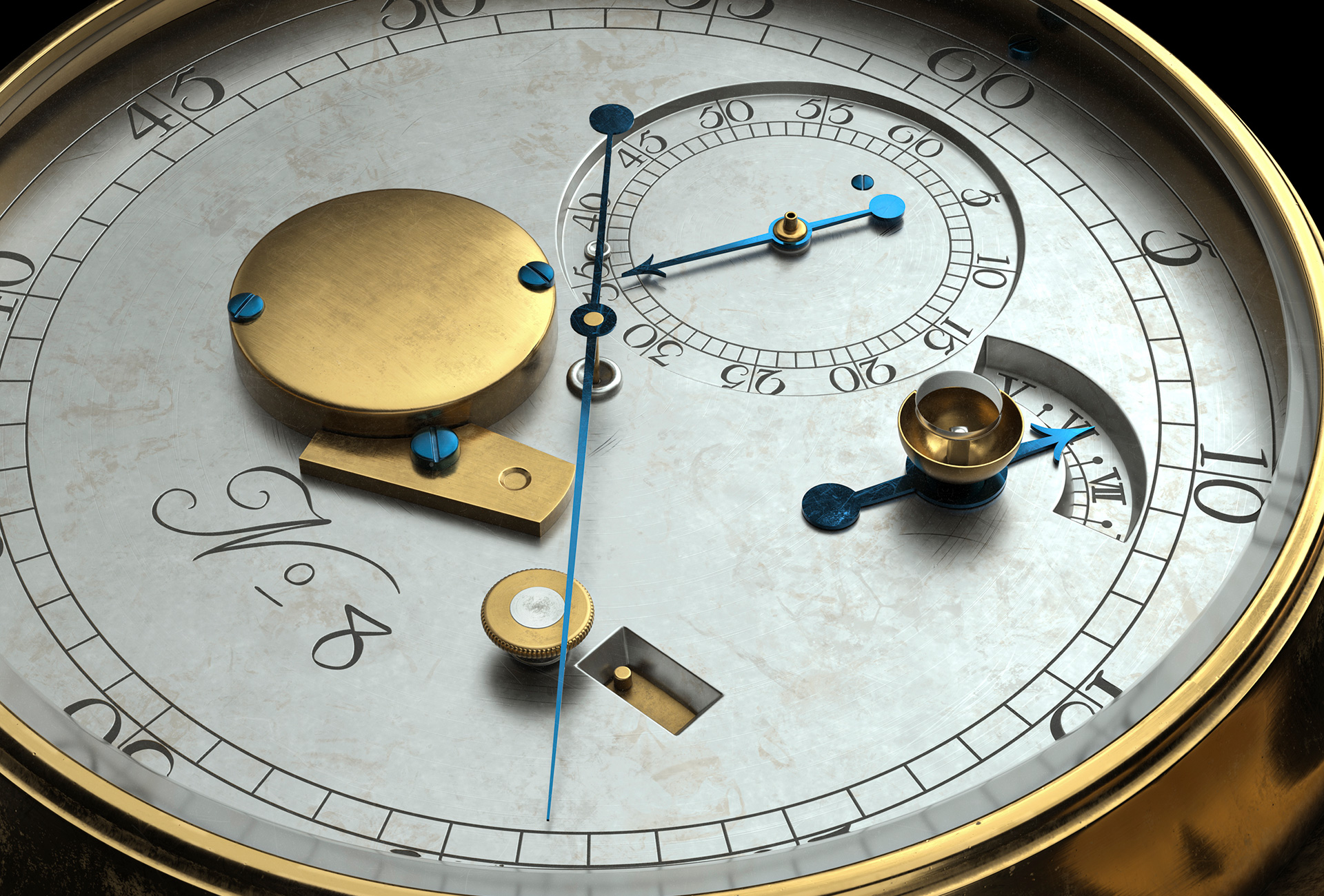
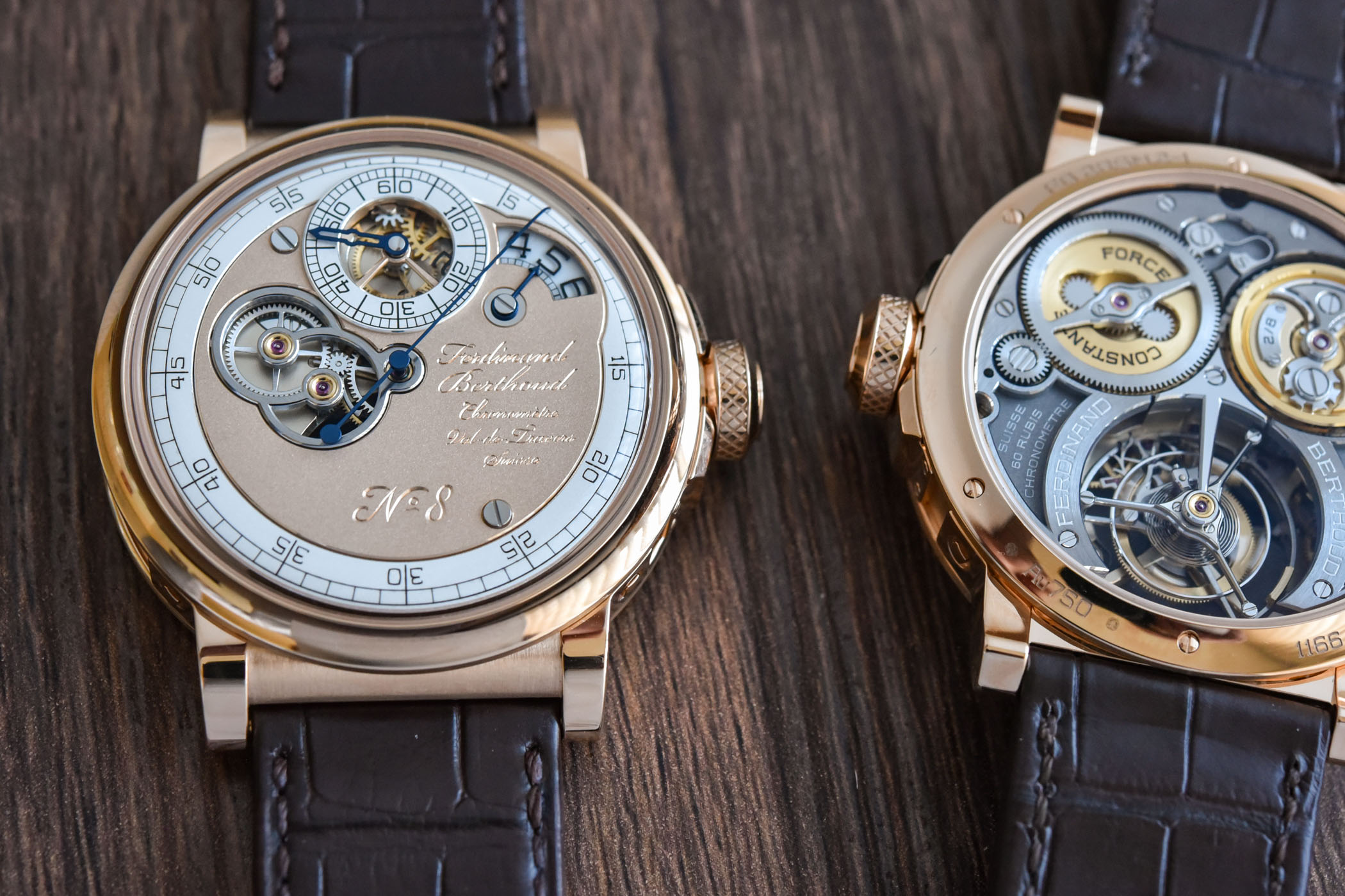
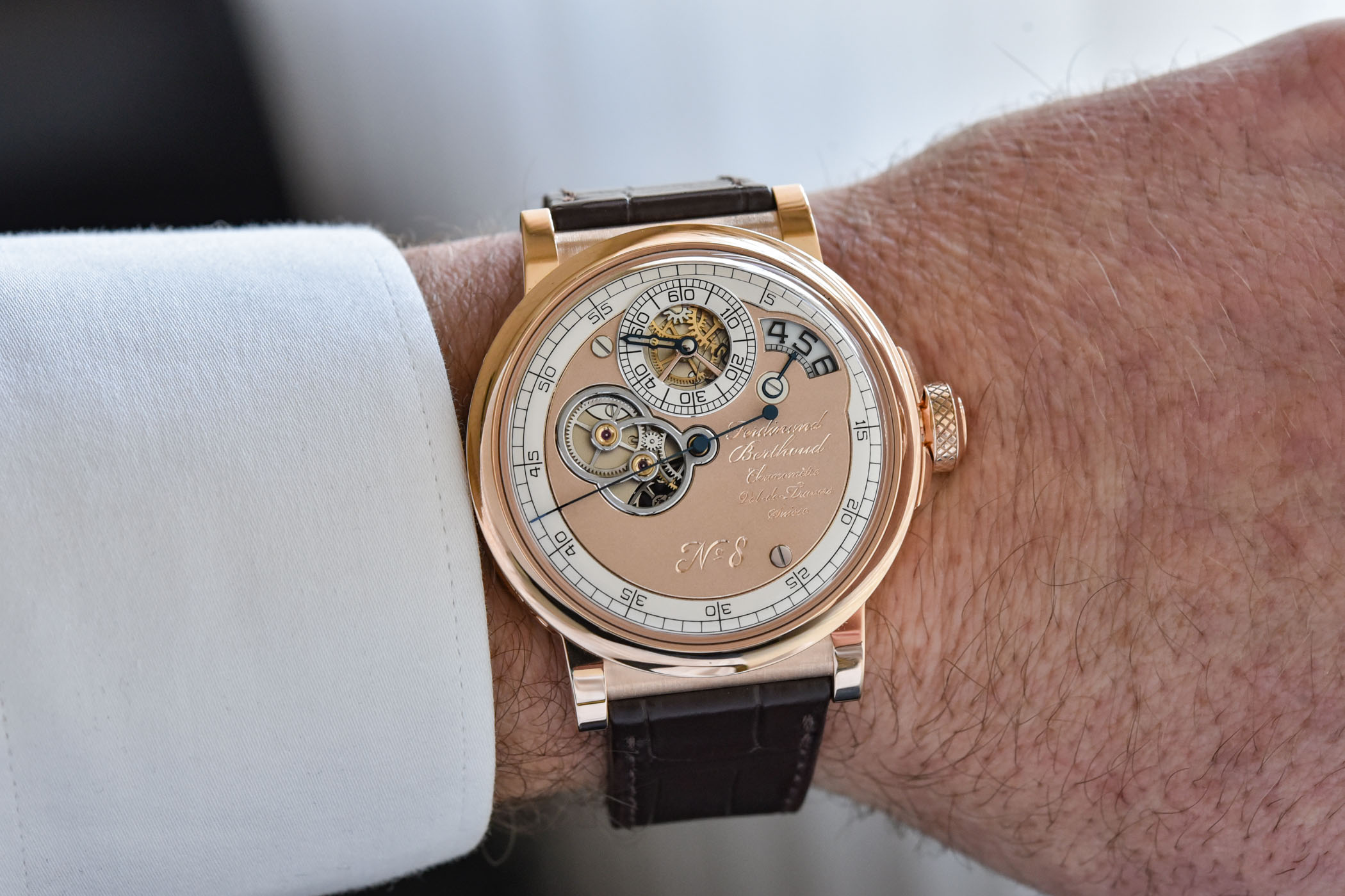
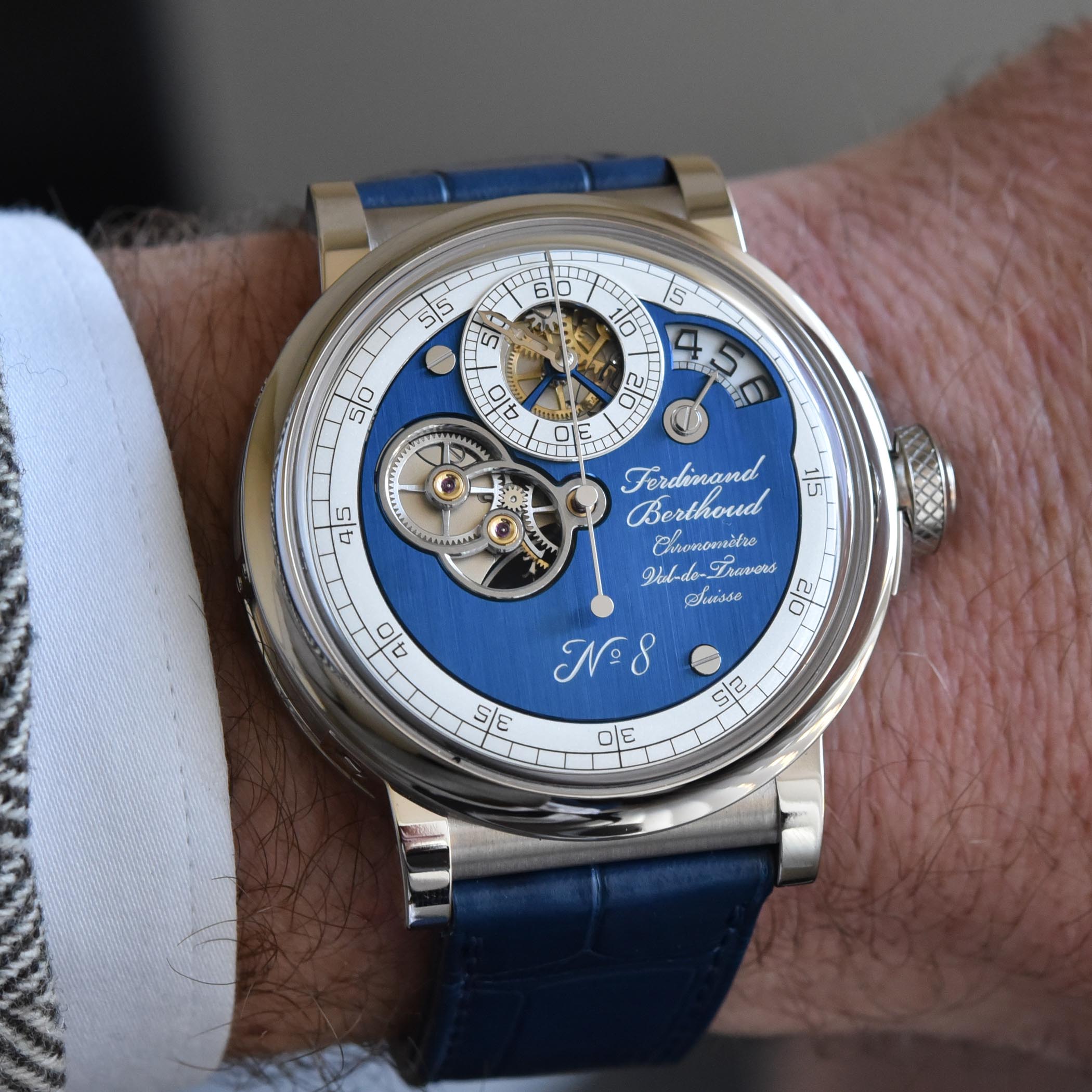
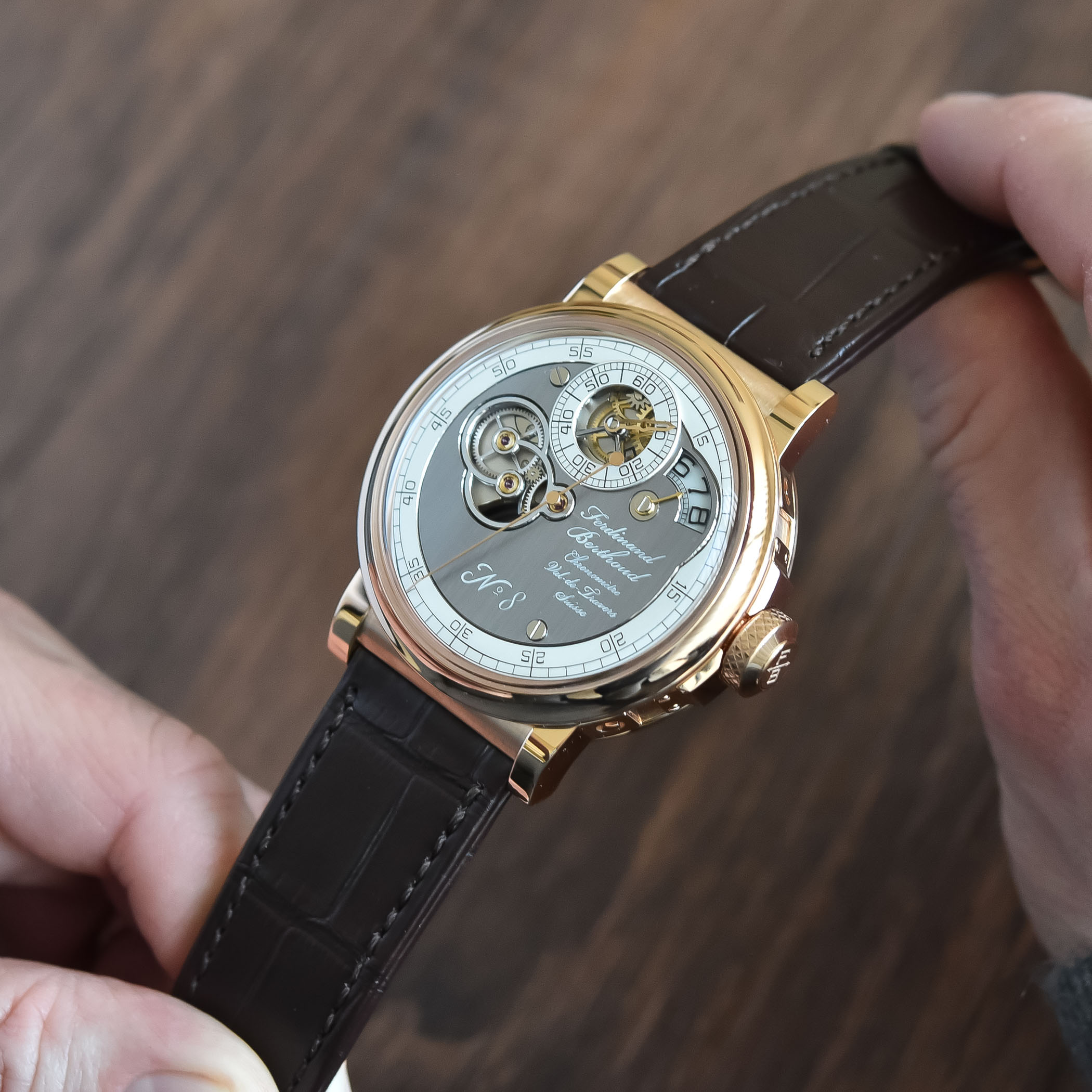
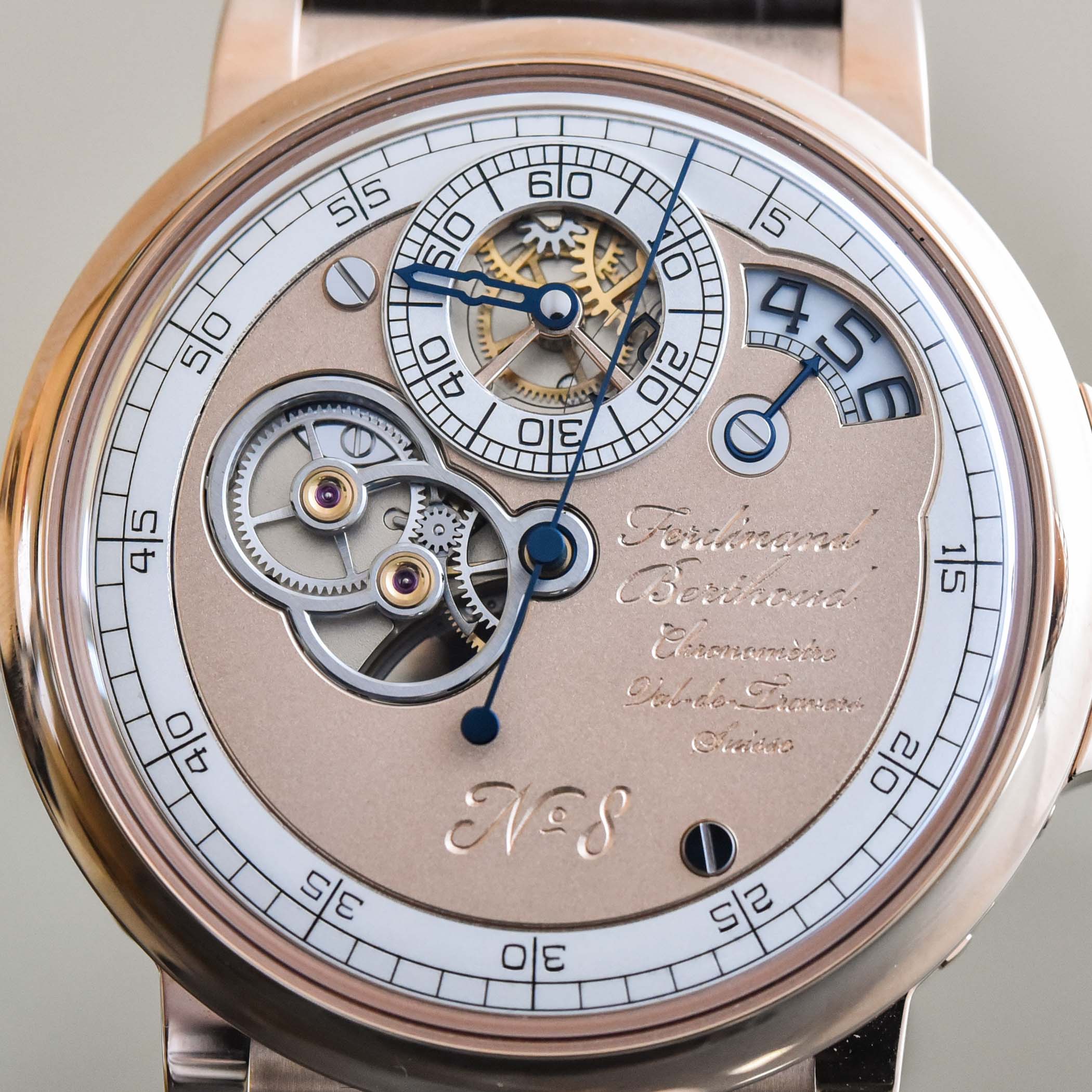
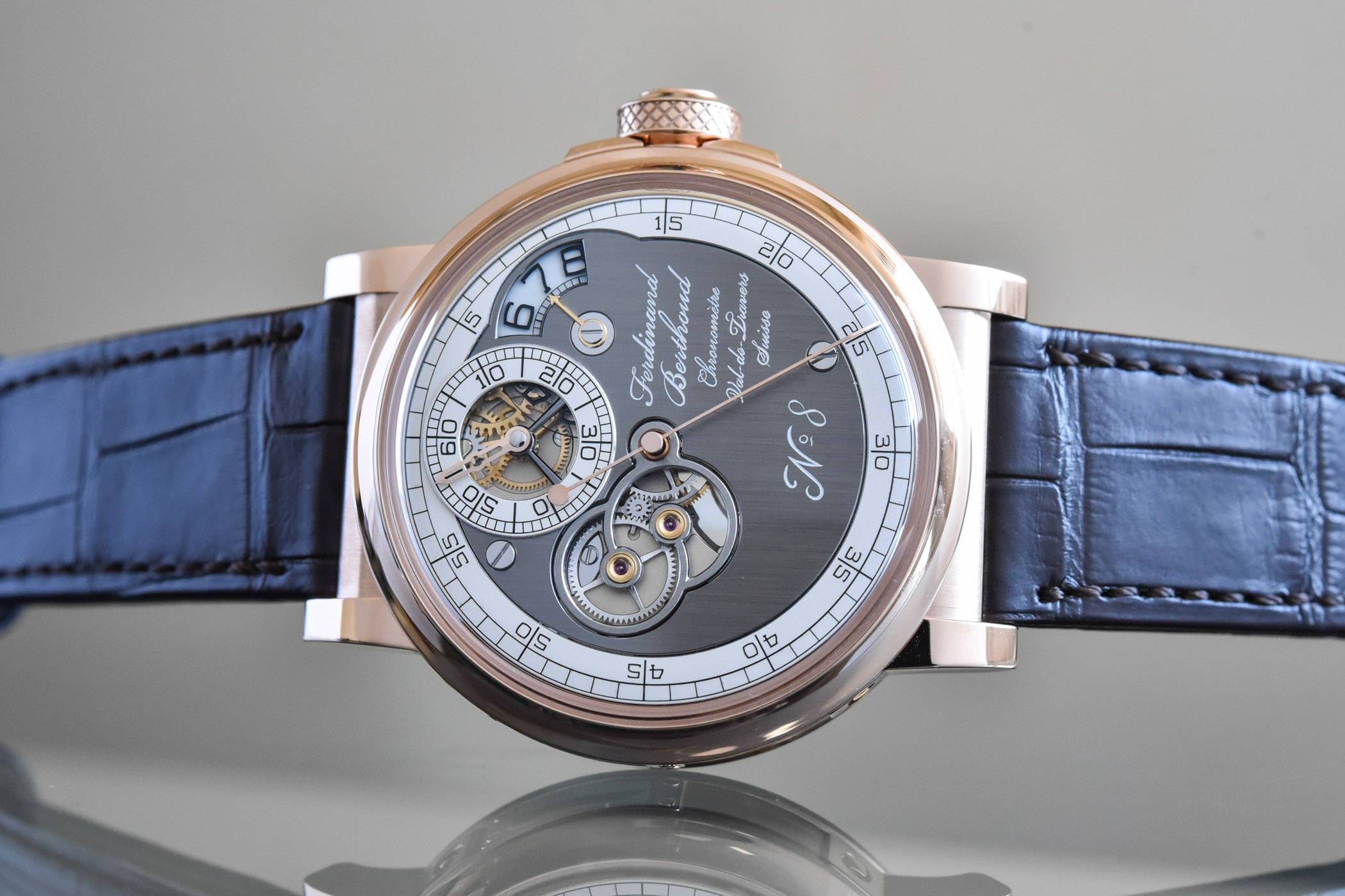
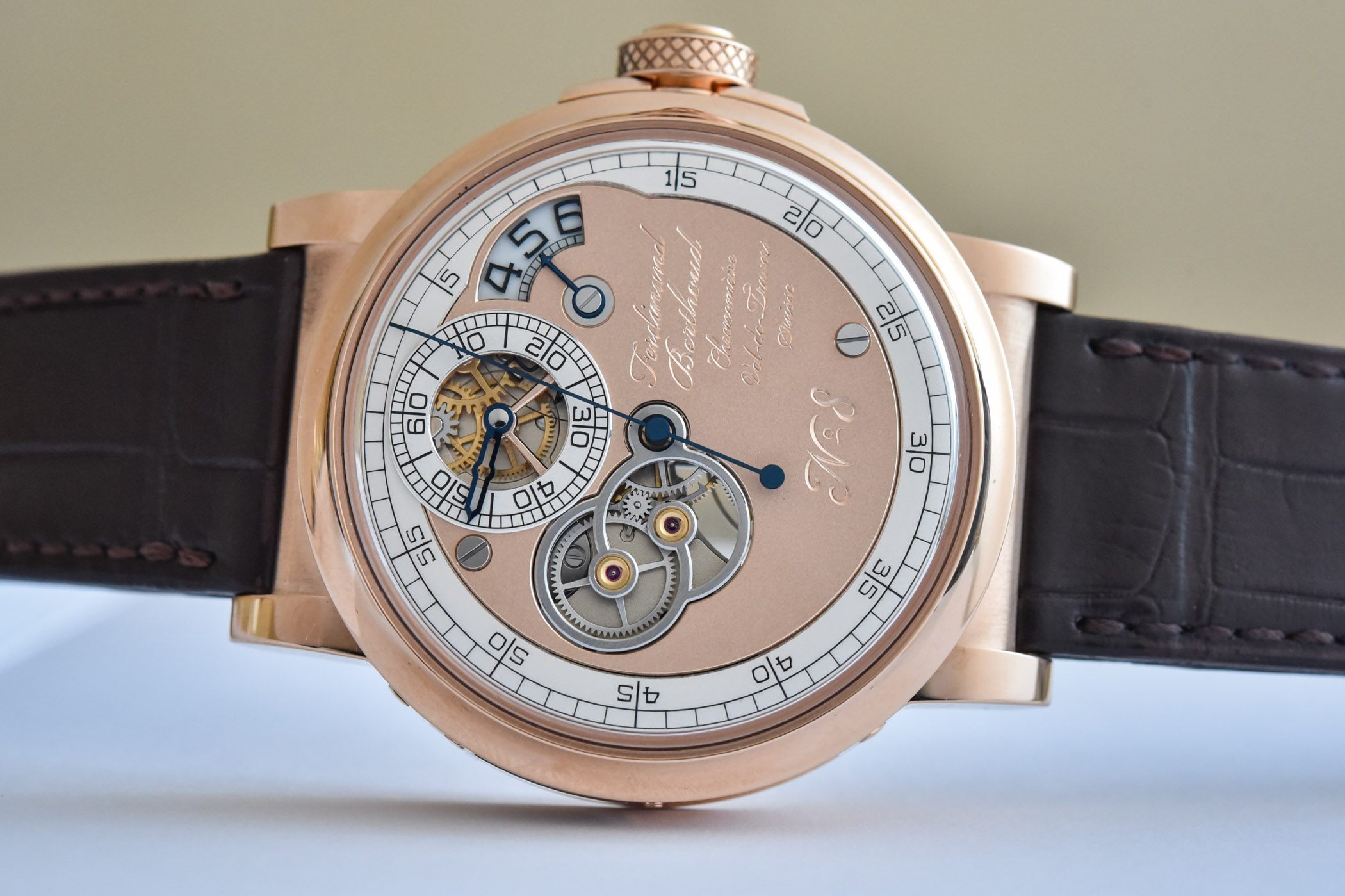
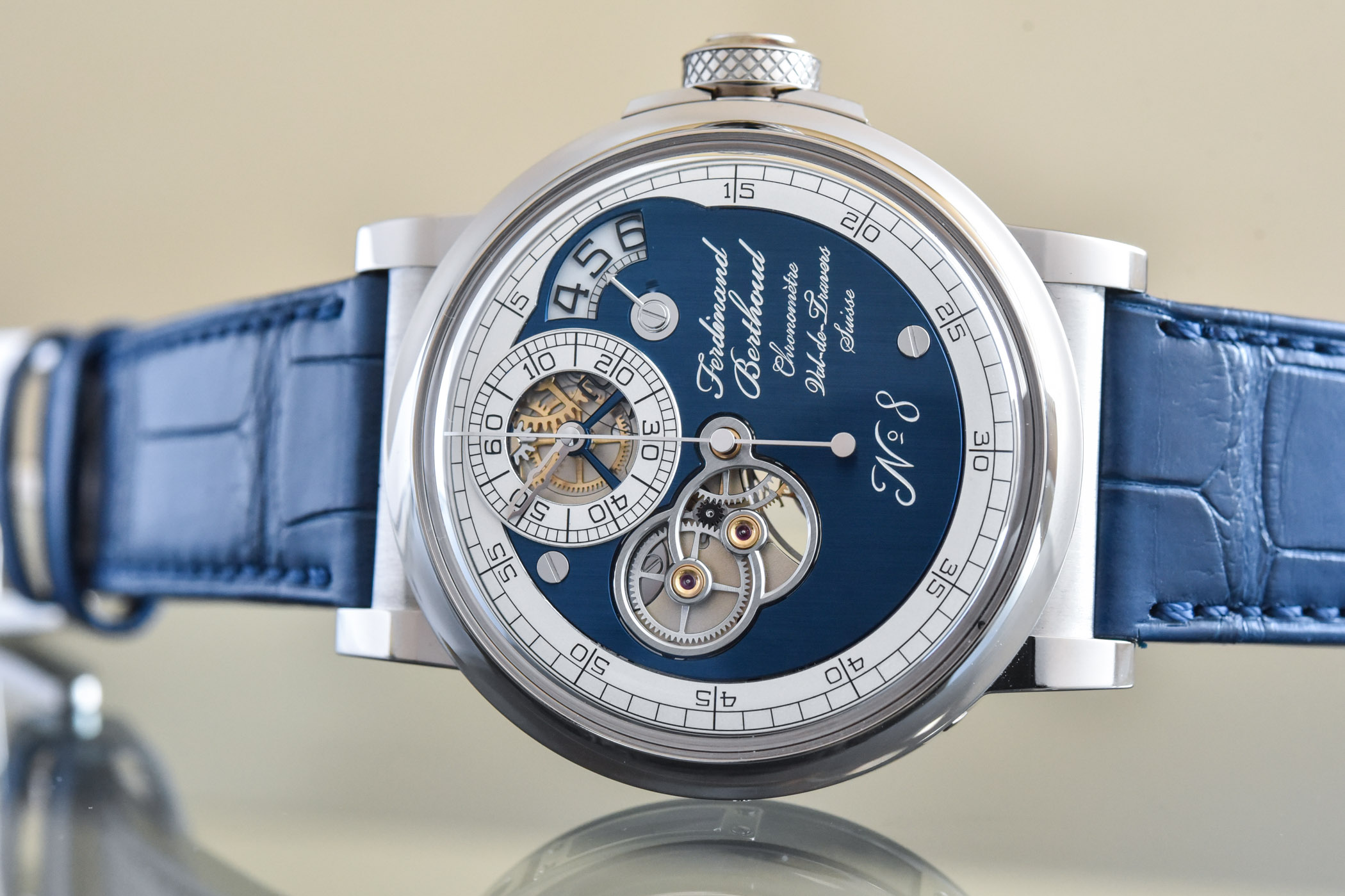
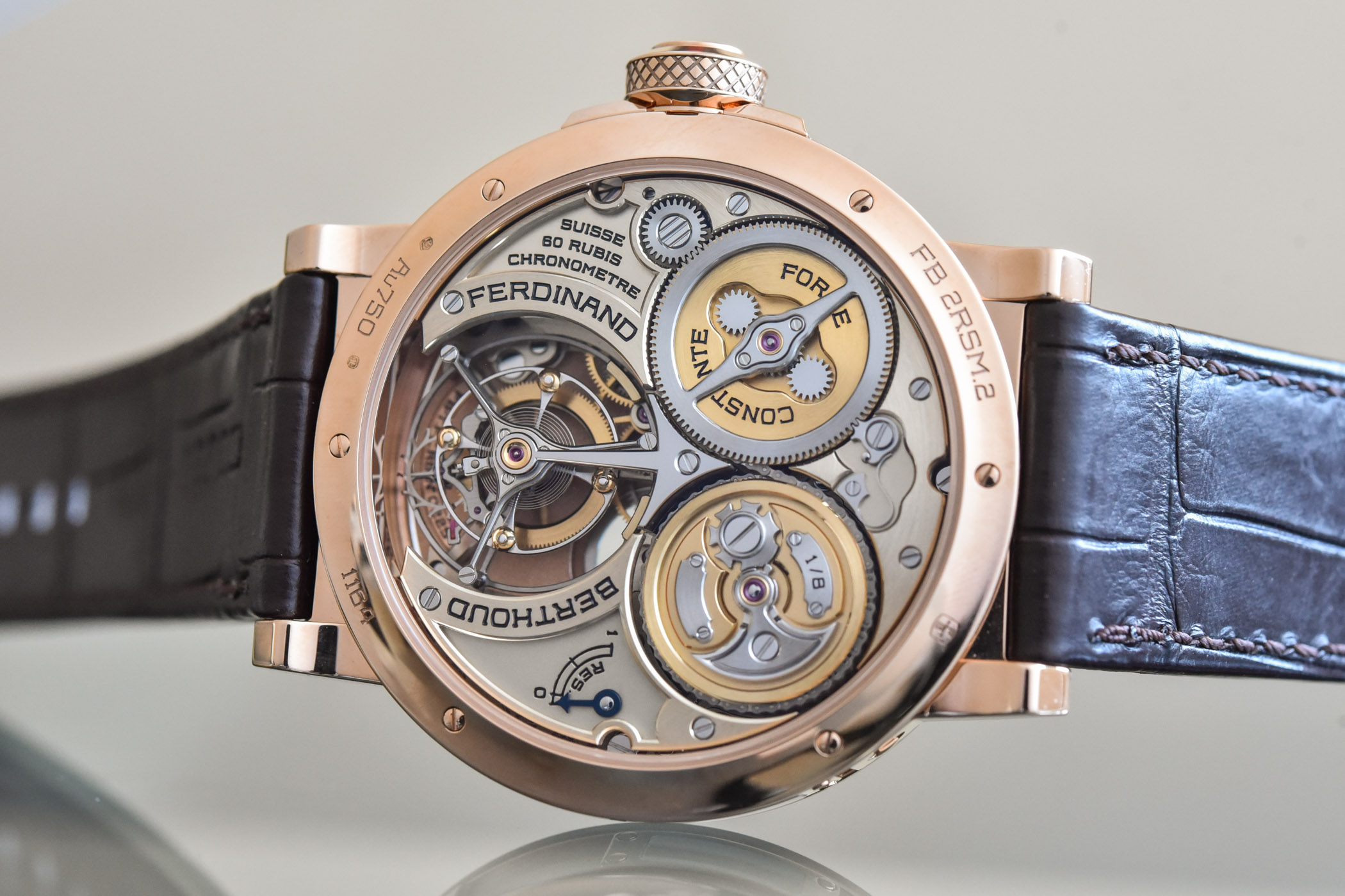

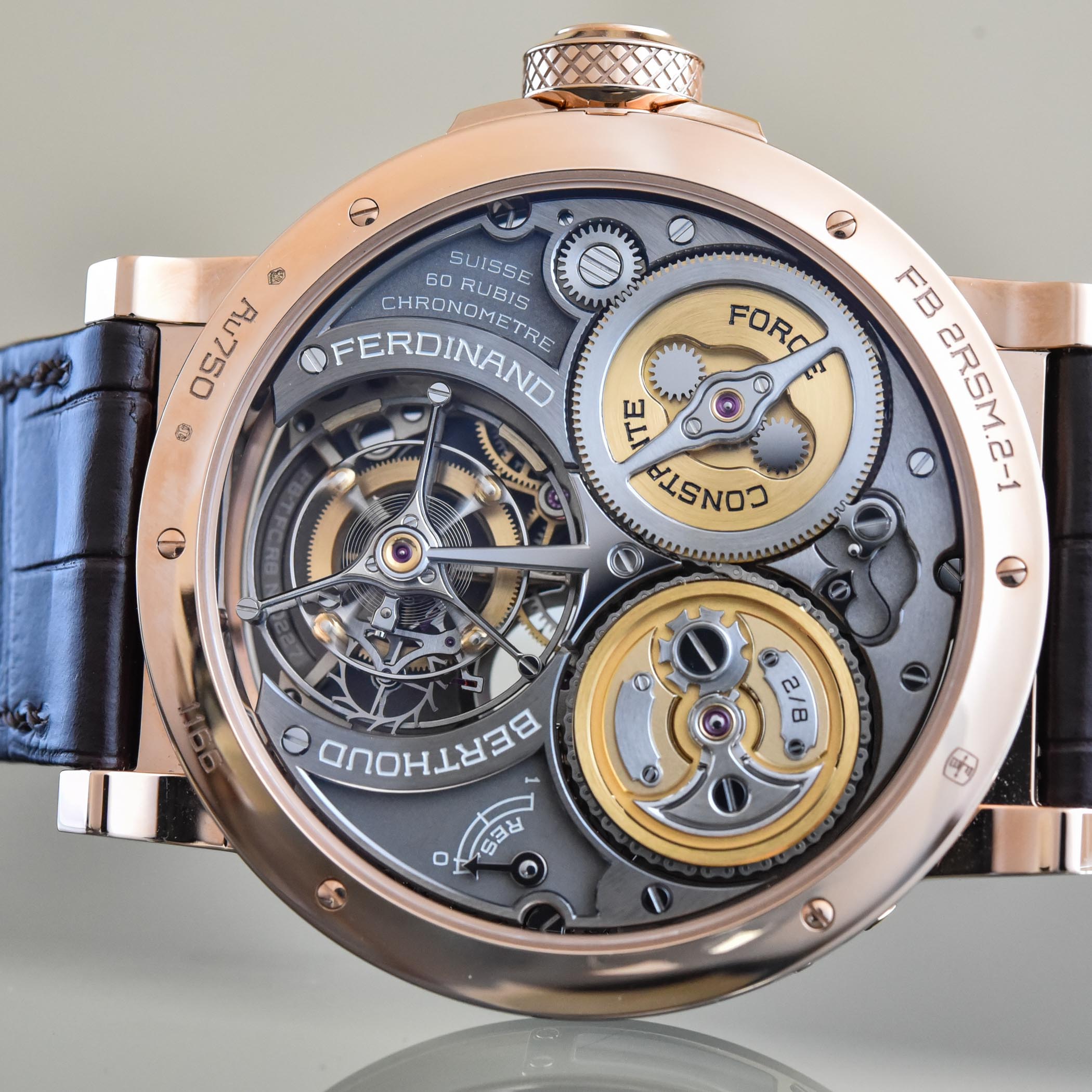
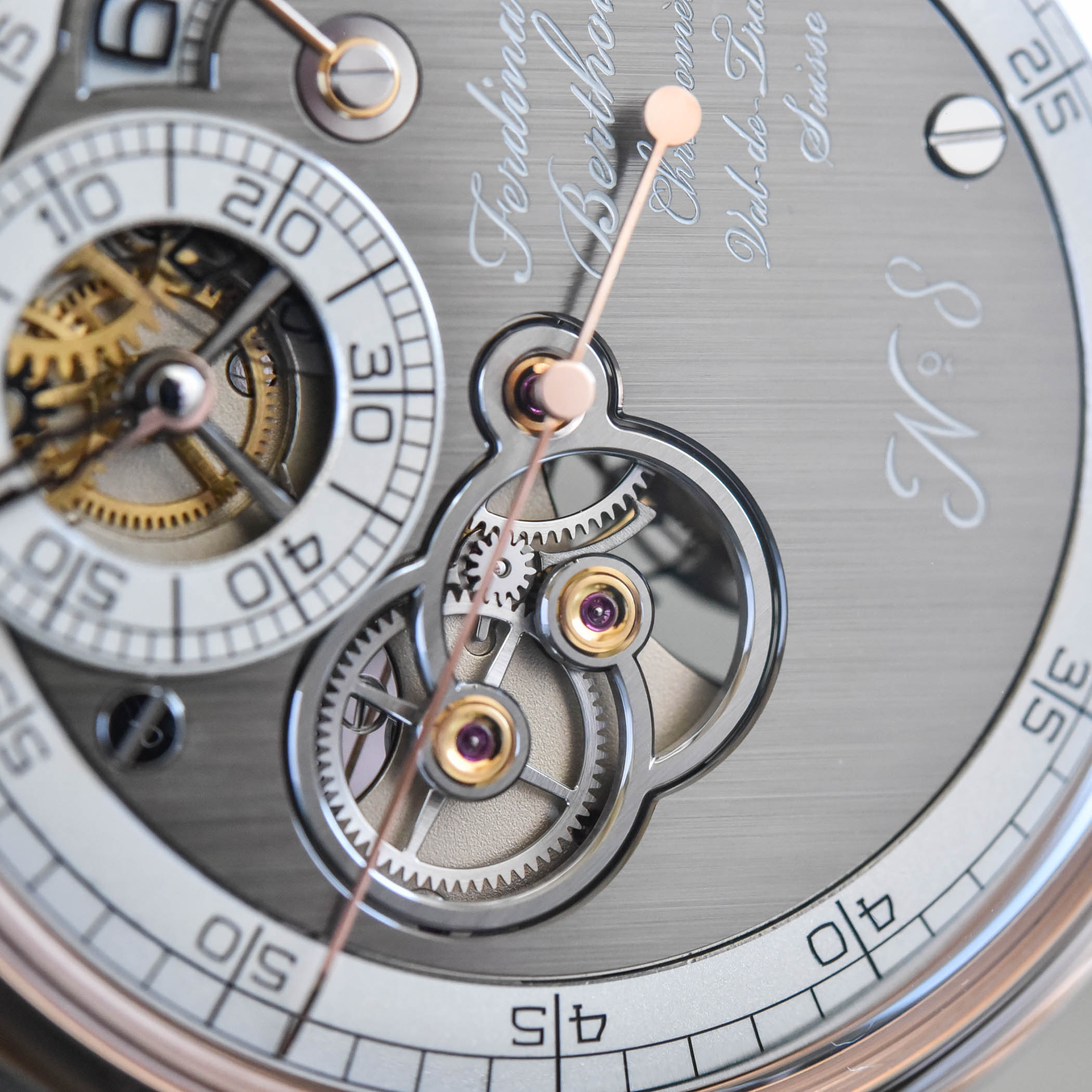



1 response
What an occasion for a young watchmaker! This brand is really inspiring.